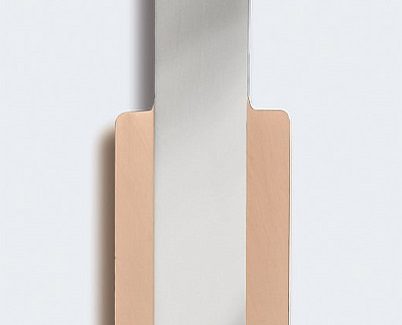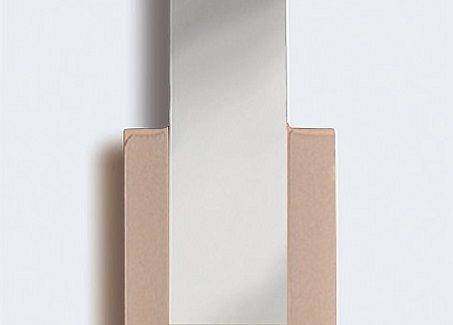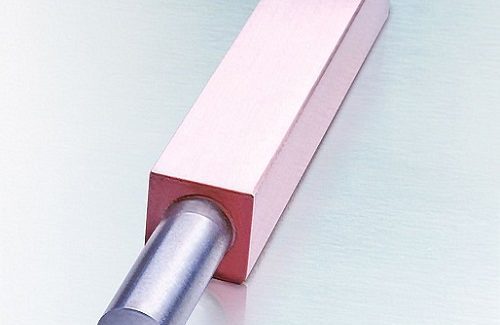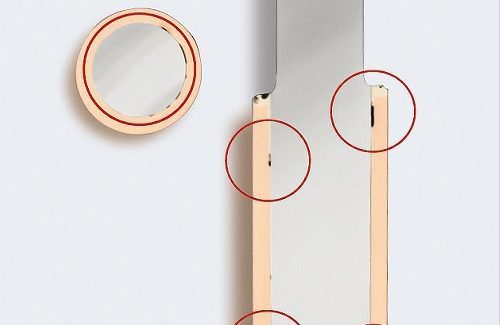An Alternative to Soldered Joints
New back-cast resistance welding electrodes made of tungsten and copper ensure optimum current transfer in resistance welding applications used in the automobile, aviation, electrical and electronics, and household appliance industries.
Posted: April 24, 2018
As a common and easy to use welding method, resistance welding is used wherever metals have to be joined to each other without entrapped air or any impairment of their conductive properties. Such applications are primarily found in the automobile, aviation, electrical and electronics, and household appliance industries. The reproducibility of the joint is among the benefits of resistance welding. Here, the quality of the electrode is crucial, among other things. With TRICONSTANT, a resistance welding electrode is now available that guarantees a flawless joint between copper and the tungsten insert, thereby ensuring optimum, uninterrupted current transmission and better heat dissipation. This is achieved by back-casting the electrode’s tungsten core with copper or copper alloys, entirely avoiding the entrapment of air that frequently occurs in soldered electrodes and leads to poorer results.
An electrical engineering firm that supplies the automobile industry welds several thousand copper wire ends to the coils of electric motors every day. But because the results of their previously-used soldered electrodes were too variable and uncertain, they switched over to a new WHG3 resistance welding electrode in the autumn of 2014 that is a form of the TRICONSTANT electrode. It ensures more exact, reproducible results for point, seam, projection and butt welding. A tungsten or tungsten-lanthanum insert is back-cast with copper. The exact configuration of the resistance welding electrode is precisely adapted to the materials that will be joined. Only then is a solid weld guaranteed. A version with added pure copper is also available. While copper reduces the mechanical strength of the electrode, it also improves current transmission and heat dissipation. This can significantly improve durability in certain cases.
This special combination of the different materials is achieved with precise process control where the temperature gradients, times and also pressure gradients play an important role. Resistance welding electrodes made of various materials offer significant advantages when they are optimally combined with each other. For example, their shafts and working surfaces are able to better withstand high thermal and mechanical loads, in addition to offering technical and economic benefits: from an application technology perspective, the best possible combination of hardness and elasticity as well as thermal and electrical conductivity is produced and economically, high durability is combined with better quality and therefore greater efficiency.
COMBINATION BASED ON INFILTRATION AND SURFACE WETTABILITY
Compared to competing materials, such as pure copper, pure tungsten, copper-chrome-zirconium combinations or a soldered tungsten-copper-chrome-zirconium combination, the WHG3 made of back-cast tungsten-copper-WCu composite materials offers better results in terms of hardness and strength, electrical and thermal conductivity, heat resistance, erosion, adhesion tendency and durability. The respective values not only depend on the geometry, but also on the point welding machine, the welding parameters used and the materials being welded. By using various inserts – such as pure tungsten or tungsten with, for example, WLa20 or WCe20 doping – the heat resistance and conductivity can be individually adapted.
The WHG3 also does not have a sandwich structure like other typical composite materials, since the combination is based on infiltration and surface wettability. TRICONSTANT electrodes are fabricated according to respective customer requirements and drawings. Both the power spectrum and requirements for the concrete dimensions are considered.
BENEFITS OF WELDED VS. SOLDERED JOINTS
The special properties of the electrode material are extremely important for optimum work results: the point forces used to press two opposing electrodes against each other in resistance welding often lie in the range of several kN, depending on the material and process. Sufficient mechanical strength of the electrode therefore has to be guaranteed for the entire service life. However, the pronounced alternating thermal load often causes severe electrode wear: the electrodes are stressed in a rapid sequence with short high-amperage current pulses of several kA, applied for less than 100 ms in some cases. The better the thermal and electrical conductivity, the greater the durability. Here, back-cast electrodes offer benefits because the properties of soldered electrodes can vary significantly from one electrode to the next.
STRUCTURE OF THE ELECTRODE
Realizing a reproducible, non-porous solder joint is not technically feasible at this time. The connection and the electrical contacting change, which means the resistance – and also the welding behavior – can fluctuate quite significantly between individual electrodes. In general, we work exclusively with tungsten or composite materials such as tungstite, for example, made of tungsten and copper or tungsten and silver. This is an infiltration composite material where a porous sintered body made of tungsten is infiltrated with copper or silver. Typical applications are found in eroding or contact material.














